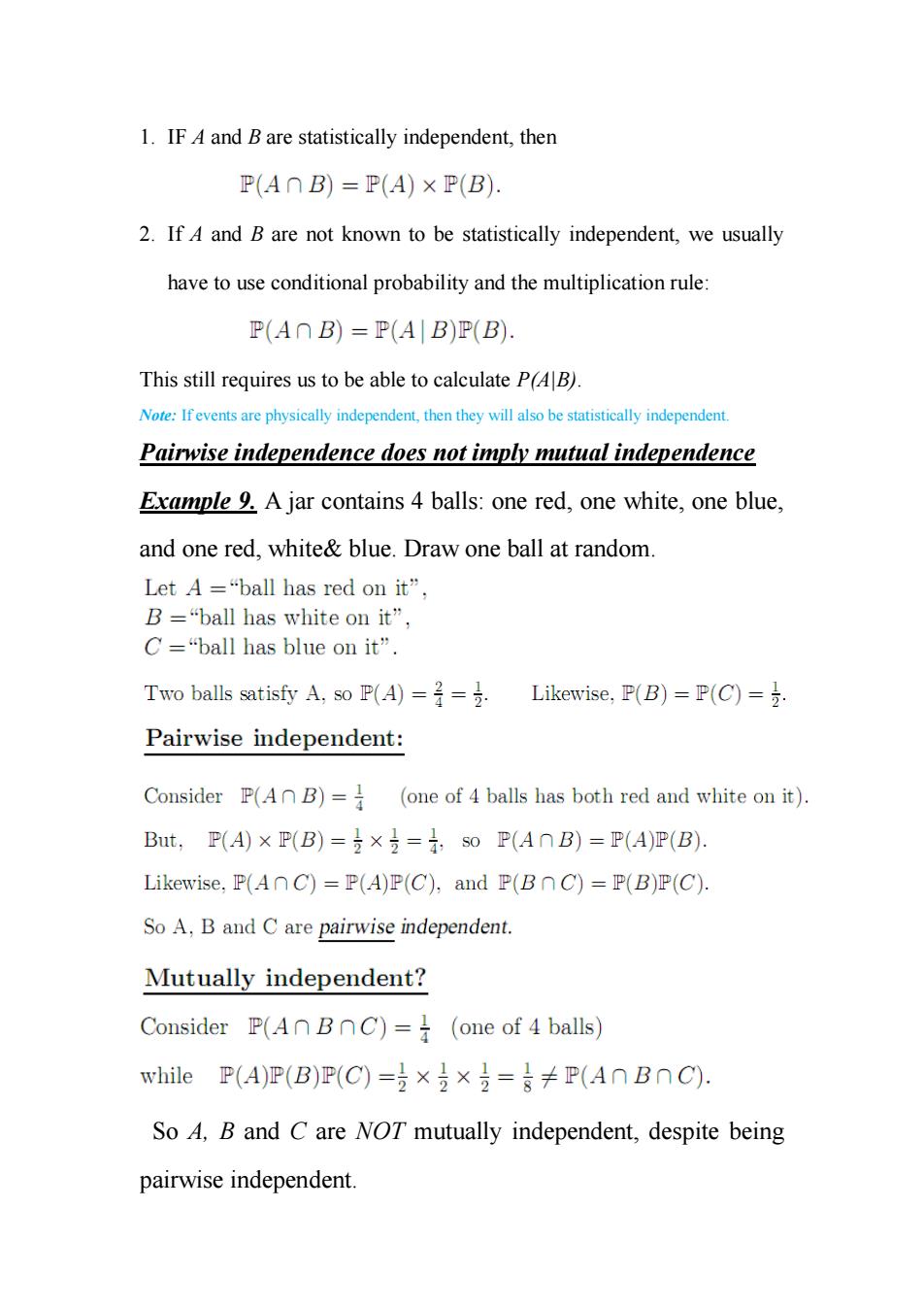正在加载图片...

1.IF A and B are statistically independent,then P(AAB)=P(A)×P(B). 2.If and B are not known to be statistically independent,we usually have to use conditional probability and the multiplication rule: P(A∩B)=P(A|B)P(B). This still requires us to be able to calculate P(AB). Nore:Ifevens are physically independen then they will also be independent. Pairwise independence does not imply mutual independence Example 9.A jar contains 4 balls:one red,one white,one blue. and one red,white&blue.Draw one ball at random Let A ="ball has red on it". B ="ball has white on it", C=“ball has blue on it”. Two balls satisfy A,so P(A)==.Likewise,F(B)=P(C)= Pairwise independent: Consider P(AB)=(one of 4 balls has both red and white on it). Bt,P(A)×P(B)=7×方=,soP(AnB)=P(A)P(B) Likewise,P(AnC)=P(A)P(C),and P(BnC)=P(B)P(C) So A,B and C are pairwise independent. Mutually independent? Consider P(AnBC)=(one of 4 balls) while P(A)P(B)P(C)=号×号×号=点≠P(AnBnO). So 4.B and C are NOT mutually independent,despite being pairwise independent1. IF A and B are statistically independent, then 2. If A and B are not known to be statistically independent, we usually have to use conditional probability and the multiplication rule: This still requires us to be able to calculate P(A|B). Note: If events are physically independent, then they will also be statistically independent. Pairwise independence does not imply mutual independence Example 9. A jar contains 4 balls: one red, one white, one blue, and one red, white& blue. Draw one ball at random. So A, B and C are NOT mutually independent, despite being pairwise independent